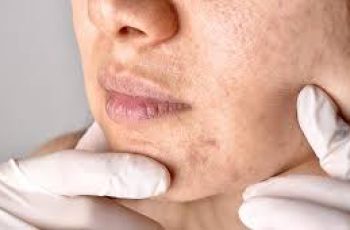6 Times You Think You Don’t Need Sunscreen But You Actually Do
I’m a person cursed/blessed with a very fair complexion. While my friends were going a little darker for afternoons at the beach, it took me all season to notice some new freckles on my forearms. Surprisingly, however, I’ve still educated myself a lot about those occasional situations when you think you don’t need sunscreen but you really (really) do.
As we soon say goodbye to low UV indexes and head for a few months of sweaty, hot days, here’s a reminder of the daily activities that still require sun protection.
You’re Behind the Wheel
Risk: High
Glass blocks most (not all!) UVB rays. So you may not get sunburned through a window, but UVA rays can get in, which are responsible for aging and skin cancer. If you drive frequently or for long periods of time (like that Byron Bay road trip you’re planning), be sure to apply sunscreen to any exposed areas.
You’re on a Plane
Risk: Low
It’s possible! Really! As with cars, airplane windows do a pretty good job of blocking most UVB rays, but for anyone sitting in a window seat (for hours on end, I might note), those UVA rays can still get through. Clouds, which are common at high altitudes, can also reflect UV rays and increase sun damage. Draw the blinds when enjoying the view, and make sure to wear sunscreen before and during your flight.
You Work in an Office
Risk: Low
When working indoors or in an office, the risk of sun exposure is low, but if your desk happens to be near a window, you might want to think again! Sun protection is required for any form of direct sunlight; clothing may be sufficient in this case, but applying a layer of sunscreen to your face, shoulders, arms, and hands can prevent the risk of long-term sun damage (sun spots, hyperpigmentation, wrinkles, etc.).
You “Only Went Out for 5 Minutes”
Risk: Moderate
It’s not the end of the world if you forget to apply sunscreen on those occasional quick outings (on the way to work, a quick trip to the post office, while waiting in line for a bagel for lunch), but if you do it every day, it’s accumulating sun damage. Remember, at the end of the year, you have to add up all those 5-minute trips… that’s time spent in the sun. It’s better to be safe than sorry.
They stand under a parasol
Risk: Moderate
If you plan to camp for several hours, the shade of an umbrella (no matter how cute, colorful or frilly) may not provide enough protection. While they protect against direct UV radiation, they don’t block all scattered and diffused rays, so skin can still get sunburned. It’s important to combine multiple methods of sun protection, rather than relying on just one. So consider SPF and shade as well as sunglasses, hats and protective clothing.
It’s cloudy today
Risk: High
A myth! A mistake! A lie! UV rays penetrate directly through the clouds to your sensitive skin. Therefore, being outdoors on a cloudy day without broad-spectrum protection is extremely dangerous. Always check the UV index before going out. The most accurate indicator is 3 or more, and you should be equipped with a healthy layer of SPF 50.
It’s after 5 p.m.
Risk: Low
The sun’s rays are strongest between 10 a.m. and 4 p.m. After that, the risk of sunburn (UVB rays) decreases with each additional hour. As sunset approaches, the sun appears dimmer, but the UVA rays maintain their intensity as long as there is daylight. Where you live also affects the intensity of the sunlight. So if you look at an Australian summer, we can still be cold at any time of the day.
DQH Knowledge drop: In your 20s, your skin cell turnover decreases. (Cell turnover is a key component in keeping your skin youthful.) You know what else slows down? Your collagen production. Starting in your 20s, collagen decreases by about 1 percent per year. Should you want to prevent fine lines and wrinkles, start by eliminating behaviors that contribute to premature aging. “If it’s bad for you, it’s bad for your skin,” says dermatologist Michel Somenek.
“Cigarette smoking reduces blood flow to the skin and causes premature wrinkling and a dull skin texture. Making the repeated pursed motion to inhale can also cause smoker’s lines. Alcohol and recreational drugs are toxins for the skin that damage its cellular structure and DNA,” Somenek tells us. “The faster you eliminate vices while you are young, the better chance your skin and body have to recuperate.” Also, adopting an anti-aging routine in your 20s is key. After all, the best offense is a good defense. We spoke to Somenek and experts Joshua Ross and Audrey Kunin to find out more.
Keep reading for the best anti-aging products for your 20s, according to skincare professionals.
Sunscreen
“We all know that the sun is the number one cause of skin aging and starting the prevention in your 20s is very important,” Ross says. “The majority of your sun damage won’t start to appear until you’re in your 30s, so don’t wait until you see it surface or you’ll be behind the curve. Stay ahead of it with a good-quality zinc-based sunscreen worn daily.”
Farmacy Green Defense Daily Mineral Sunscreen
An invisible sunscreen with SPF 30, plus botanical extracts meant to protect skin with tons of antioxidants. Bonus: It’s clean and fine to use under makeup.
Bareminerals Complexion Rescue™ Tinted Moisturizer Broad Spectrum SPF 30
Although we recommend you use your SPF and moisturizer separately, we also understand moments when you don’t have time or energy for that extra step. For those times, this bareMinerals moisturizer is a great thing to have on hand.
Vitamin C Serum
“A great introduction to anti-aging is to start with a vitamin C serum in your morning skincare routine,” Ross says. “It’s a powerful antioxidant that will neutralize free radicals and brighten the skin.” He adds that it’s a great way to counteract the effects of the sun’s harmful rays, which, as previously mentioned, are among the biggest causes of premature aging.
Drunk Elephant C-Firma™ Vitamin C Day Serum
The Drunk Elephant C-Firma is a lightweight serum that promises to give skin a glow by combining the brightening powers of vitamin C with ferulic acid, l-ascorbic acid, and vitamin E. The included sodium hyaluronate is meant to replace hydration loss, so you shouldn’t have to deal with any irritation.
Sunday Riley C.E.O. Rapid Flash Brightening Serum
This potent serum is jam-packed with vitamin C (15 percent, to be exact), which means it’s a potential superstar at both brightening skin and dousing it in antioxidants.
Peptides
Using peptides on your skin has many benefits, says Somenek. “The skin barrier is what defends the body against pollution, UV rays, bacteria, and toxins. It can be damaged by several everyday factors. Using topical peptides aids in building a stronger barrier,” he says. “Peptides comprise elastic fibers, which are a type of protein. These fibers help to make skin appear taut and firm. Peptides can also help repair damaged skin, relieve inflammation, and even out skin tone. Some peptides can kill acne-causing bacteria that is common in 20-somethings.”
Kunin agrees, saying, “Peptides are an excellent entry point for supporting collagen.” She recommends looking for face and eye treatments that contain these collagen-boosting powerhouses.
Charlotte Tilbury Magic Eye Rescue Cream
This Charlotte Tilbury super-emollient eye cream has a base of coconut oil and shea butter (read: it’s incredibly hydrating). Botanicals plus peptides are meant to help reduce dark circles and boost collagen, respectively.
This creamy moisturizer serves up potent collagen-boosting peptides and pycnogenol, and antioxidant-rich vitamin C. “Instead of sitting on top of the skin, peptides penetrate the outer layer so they go deep. The ‘signals’ they send tell the cells to produce elastin and collagen, which are needed for youthful-looking skin,” explains Somenek.
At-Home Peel Pads
Remember that skin cell turnover fiasco we talked about earlier? One way to help support it is by exfoliating. “Exfoliation is important to help keep skin fresh and luminous,” Kunin says. She recommends using at-home peel pads as an easy and effective way to exfoliate.
“The goal in your 20s is to fight the slowing pace of cell turnover. It is wise to use products that gently exfoliate, yet still remove oil and other impurities. Products that have Alpha Hydroxy Acids (AHA) or Beta Hydroxy Acids (BHA) are a good choice.”
According to Somenek, you should only exfoliate two to three times a week. “People of all ages are guilty of over-exfoliating and that can be too much of a good thing,” he says.
Dermadoctor Kakadu C Intensive Vitamin C Peel Pad
A few swipes of this Derma Doctor powerful peel pad promise to leave your skin glowing and smooth, thanks to the seven (yes, seven) types of chemical exfoliants, including AHA and BHA. It also contains vitamin C via Kakadu plum extract for added brightening and antioxidant protection.
KEY INGREDIENTS Kakadu plum extract is sourced from the Kakadu plum, a fruit grown in northern Australia. It contains vitamin C, which restores the skin’s natural barrier, increases collagen production, and soothes irritation.
Dr. Dennis Gross Skincare Alpha Beta® Universal Daily Peel Pads
These are the gold standard of peel pads, with a cult following and over 900 five-star reviews on Sephora. They’re easy to use and contain a blend of anti-aging exfoliating acids.
Emollient Night Cream
“In your 20s, you need to start upping the hydration in your skincare routine. You may have been cautious of over-moisturizing because of acne in your teens, but as you enter your 20s, your skin transitions and becomes drier,” Ross says. “I recommend an emollient night cream added into your evening skincare regimen.”
“Twenty-somethings need to make sure that they are not using creams that will clog their pores and cause excess oil production,” says Somenek. Opt for non-comedogenic products.
Cerave Skin Renewing Night Cream
One great choice is the CeraVe Skin Renewing Night Cream, which is a non-comedogenic night cream that leaves skin soft and glowy. It combines the moisturizing powers of ceramides and hyaluronic acid.
RoC Retinol Correxion Max Hydration Creme
“The best night cream ingredients contain retinol, benzoyl peroxide, and/or salicylic acid or hyaluronic acid. The goal is to moisturize, yet remove excess oil,” says Somenek. This Roc Retinol Correxion cream fits the bill as it contains both hyaluronic acid and retinol so it promises to moisturize while also being non-comedogenic.



